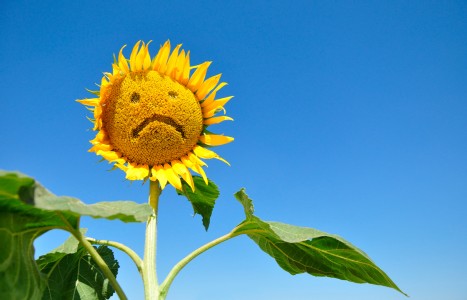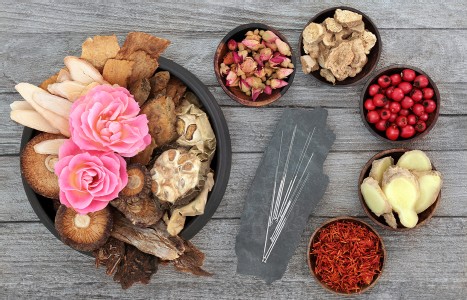Did any of you ever get the feeling in school that it simply was not OK to speak about wanting to be successful? To get into the nitty gritty details of how to make money in practice? Maybe you were even someone like me who was directly told by someone in a position of power that I needed to take what I could get because in private practice, I wouldn’t make money.
Supporting the Patient's Need to "Feel Lean" With Patent Teas and Herbal Formulas
In our culture, in January, many of us are still hopeful that the possibly unrealistic goals regarding our body weight and fitness may be achieved. By February, the dust is settling on the gym bag, and the fresh vegetables are mounting up in the icebox. By March, much of one's exercise is armchair-based, watching the super-slim people advertise gym equipment. I think the kindest thing about Oriental medicine is that it makes allowances for body type and thereby takes the stigma away for those who have a hard time losing weight. It can also address the mental stagnation that occurs when carrying extra weight.
In TCM, obesity can manifest as a deficiency (of the spleen) or an excess (heat of the stomach or large intestine), and is sometimes referred to as phlegm (heart phlegm for elevated blood fats and phlegm heat or obstruction; also accumulation of phlegm damp or cold).
It is possible for a patient to feel defeated before they even begin to try to lose weight because of the tiredness and apathy that can manifest when there is excessive dampness in the body. This tiredness can make the possibility of exercising impossible, and making a raw herbal formula from scratch also improbable. However, the following options are available. According to the ingredient list, these do not contain ephedra (ma huang). Since this is an article and not an ad, I will not mentioning specific manufacturers. Should you be unable to identify a product, my e-mail is listed at the end of the article; I will be glad to communicate with you.
Step One: Tea Bags
I have found that the best first step is the use of tea bags. For those "feeling fat" (possibly because of a deficient spleen, causing edema), a traditional Chinese manufactured "damp clearing" tea can be used as a digestive aid. It can also be used for those that overindulge and induce an excess condition of food stagnation.
To my knowledge, this tea does have caffeine. The one that I have used most consistently contains cha (camellia); shan zha (crataegus); fu ling (poria); chi xiao dou (phaseolus); huo xiang (pogostemonn); chen pi (citrus); shen qu (massa fermentata); mai ya (hordeum); jue ming zi (cassia); qian niu zi (pharbitis); ze xie (alisma); and la fu zi (raphanus). Its actions are to dispel food stasis and clear stomach, clear liver heat, dispel damp, and benefit the movement of urine.
For those patients who are sensitive to caffeine, another choice, which is caffeine-free, resolves stomach phlegm, circulates and tonifies qi, and regulates spleen and stomach, contains bo he (peppermint leaf); ci wu jia (eleuthero root); gan jiang (ginger root); pi pa ye (loquat leaf); zi su ye (perilla leaf); and dan zhu ye (lophatherum leaf). This is formulated and distributed in the U.S.
Lastly, a tonic tea that mildly cleanses and reduces fat and cholesterol, as well as enhancing immunity, contains huang qi (astragalus); gou qi zi (lyceum); ci wu jia; wu wei zi (schizandra); luo han guo (momordicae grosvenori fructus); and jiao gu lan (gynostemma).
Hopefully, the clearing and (in the latter choice) tonifying effects of these teas can start the patient off on a weight-loss program and help to clear the damp that clouds the emotions. The release and support of the qi can boost the patient's energy and help them start an exercise program.
Step Two: Capsules/Pills
Once the patient has cleared his or her system with the teas, it is possible that the patient will then absorb the herbs in the following two products.
The first product continues the work done by the teas. It clears stomach heat, cleanses the bowels and detoxifies residual toxins. Mildly diuretic and energy-giving, it contains caffeine. This product contains chai hu (bupleuri radix); ban xia (pinelliae ternatae, rhizoma); sheng jiang (zingiberis officianalis recens, rhizome); huang qin (scutellariae baicalensis, radix); bai shao (paeoniae lactiflorae, radix); zhi shi (citri aurantii, fructus immaturus); da zao (zizyphi jujubae, fructus); da huang (rhei, radix et rhizome); zao jiao (gleditisiae sinensis, fructus); wu jia shen (eleutherococcus senticosus, radix); huang qi (astragali membranacei, radix); lu cha (camellia sinensis L.); and gotu kola (centella asiatica L.). As you can see, it also is tonifying and moving. Thus, it can speed up the body metabolism and breakdown of fatty tissues, as well as suppress appetite. These products are in capsule form.
The second choice is for patients with high cholesterol and chronic bacterial and fungal infections, accompanied by qi, wei qi or blood deficiency. This detoxifies and activates blood, kills parasites, and tonifies qi and blood. Contents include du suan (odorless garlic bulb); huang qi; ling zhi (ganoderma/reishi); shan zha; dang gui (tang-kuei root); dan shen (salvia); bai zhu (white atractylodes rhizome); and he shou wu (ho-shou-wu root). These are in tablets.
One of the biggest achievements for a patient who "feels fat" is the ability to move beyond that self image. By clearing away the dampness and allowing the patient to "feel lean," he or she can then feel encouraged to start exercising and employing better eating strategies. Also, receiving acupuncture treatments while going through this transformation will provide support for the body, mind and emotions.


